
Content creation can feel like a never-ending treadmill. As soon as one piece is published, your content marketing team has already set to work on the next 10 ideas.
I get it — content is the cornerstone of any marketing strategy.
But the content production treadmill creates a slippery descent into mass-producing content that no one sees or engages with. If you solely focus on churning out new pieces, you risk diluting the quality of your work.
When it comes to delivering a content marketing strategy that converts, simply increasing production is the incorrect approach.
Instead, make your existing content work smarter. Content repurposing can turn the speed of your content treadmill from an exhausting 10-mph sprint to a much more manageable 5-mph recovery walk — all while letting you reap the benefits of extending the value of your best content.
Read on to learn:
- What is content repurposing?
- Content formats for repurposing
- Why should you repurpose content?
- Which content pieces should you repurpose?
- How to repurpose content
- Content repurposing examples
- Content repurposing tools
What is content repurposing?
Content repurposing is the act of recreating content in different formats. You take the same information and convert it into a new concept for a different content channel.
For example, you could craft a series of blog posts around your most popular webinar topic, embedding clips from the webinar into your blog to give it an additional interactive element. Or, you might take a podcast and clip it into small sound bites, then publish them across your social media channels.
Content formats for repurposing
Almost any type of content can be recreated into a different format. However, success lies in identifying the best repurposing opportunities.
Here are a few of the content types you can transform your best-performing pieces into:
- Blog post (round-up, Q&A, interview, etc.)
- Case study
- Online course
- Data chart
- Quote graphic
- eBook
- Educational email series
- Email newsletter
- Forum answers
- Guest post
- Infographic
- Podcast
- Social media clip
- Twitter thread
- Instagram carousel
- Video snippet and teaser
- Webinar
- Downloadable slide deck
- Whitepaper
- Industry report
Why should you repurpose content?
The benefits of repurposing content stretch far beyond helping get you off the content production treadmill.
1) Save time
Content repurposing is an effective way to amplify the value of previous content while cutting back on production time and effort. Rather than reinventing the wheel with something new, find high-performing existing content pieces you can quickly spin into new formats.
2) Create a robust content bank
By reducing production time, repurposed pieces also feed your content bank. You’ll have a stream of content ready to publish with minimal up-front effort. Actively analyze your existing content for repurposing opportunities to build your content bank.
3) Develop a consistent publishing frequency
Feeding your content bank helps you maintain a high-caliber publishing frequency without compromising on quality. Crafting new content requires significant planning and research. Repurposing content, however, lets you elevate existing pieces and optimize them for new content formats and channels.
4) Expand content visibility
Content repurposing is a no-brainer activity if you want to create content that connects with relevant prospects across multiple platforms. It expands the reach of your marketing efforts and helps attract even more eyes to your pieces.
Plus, it can help you keep up with your audience’s content demands. A 2021 survey by Contently found 80% of people read, watched, or listened to a piece of branded content in the past year. Different people are drawn to different types of content, so leveraging new formats will help you reach more people.
5) Reinforce your message
There’s a “rule of seven” in the marketing world that states people need to see something seven times before they take action. This well-known guideline highlights the importance of reinforcing your message.
Repurposing content lets you reiterate your brand message, bringing your audience closer to taking action. The more you repeat your message, the more strongly your brand will align with that messaging.
6) Improve SEO performance
Content repurposing can be a great tactic to improve your SEO performance.
While social media doesn’t directly impact organic rankings, it can still help them. Social media shares of your articles could act as trust signals for your content by expanding its distribution and exposure.
Repurposing content as guest posts on other reputable sites in your industry, for example, can increase the number of backlinks you receive. Backlinks play an important role in SEO, so, the more quality, relevant backlinks you receive, the more trustworthy Google will deem your content.
It also enables you to break down long-form content into smaller, more detailed articles to create a hub and spoke content model.
The hub and spoke model organizes your on-site content topically; rather than having one deep-dive article, you produce a series of “spoke” posts connected via internal links. These posts connect to a “hub” page that covers the topic on a broad level. This structure can improve keyword rankings and help Google better understand your information architecture for SEO.
7) Increase brand familiarity
Repurposed content positions you as an authority figure by highlighting your profile across multiple mediums. As you increase content distribution with repurposing, people will recognize your brand as the go-to source for your chosen topic.
Which content pieces should you repurpose?
While I can easily expound upon the powers of repurposing content, that doesn’t mean every piece should be reused.
Almost any content can be repurposed — blogs, videos, podcasts, social media posts, emails, you name it. But repurposing any and all content adds more to your plate than one team can realistically handle. Worse, it’ll dilute the impact of your most powerful pieces.
Instead, focus on repurposing your most valuable content.
Prioritize these content types for reproduction:
- Evergreen content
- High-performing content
- New data
1) Evergreen content
Evergreen content is any that remains relevant long past its publication date, regardless of current events.
This type is based on topics that remain relatively unchanged, such as how to save money, wedding checklists, or business tips for new entrepreneurs. While the information in these pieces may need minor updates over the years, they should remain largely unchanged.
Repurposing evergreen content brings timeless content back to the forefront of your content strategy, saving you the time and effort it takes to formulate new content from scratch.
Reusing old, evergreen content can also attract more eyes to the original pieces and strengthen your authority on the topic.
Evergreen content is the gift that keeps on giving, so look out for opportunities to syndicate evergreen pieces with repurposing.
2) High-performing content
Repurpose your best-performing content to maximize its impact. High-performing content could include webinars that earn outstanding attendance and feedback, blog posts with high visitor rates and reshares, and social media posts with a stream of comments and likes.
Measure content KPIs and track performance so you can easily spot high-performing pieces. Once you’ve found your hero content pieces, repurpose them for new content formats and channels. If it’s performing well on one channel, it’ll likely perform just as well in other formats.
High-performing content is a clear indicator that your audience connects with what you’ve shared. Repurposing those pieces reinforces your messaging and extends the lifespan of popular topics. Anyone who missed the original content piece can still benefit from the altered versions. Plus, it can draw eyes back to the original content, further increasing reach and performance.
3) New data
In addition to evergreen and high-performing content, consider repurposing new ideas or original data that isn’t yet available elsewhere. This increases your likelihood of being cited as a source or quoted by others talking about the same topic.
For example, imagine you ran an industry study on the state of product marketing and gathered new data on how consumers prefer to interact with different user interfaces. You might go over the study results in a webinar, write a blog with insights and takeaways, and publish the study findings in a downloadable whitepaper.
As your new statistics spread, you can expect others writing about changing consumer UI preferences to link to one of your content pieces as a resource.
Tip: Build repurposing into your existing process
Content repurposing doesn’t have to be reserved for content that’s already been published. Rather than reactively generating repurposed content, switch to an active content repurposing approach.
This method builds the repurposing process into the initial content production process for select pieces. At the same time as publishing the main content piece (e.g., a blog post), you also publish or schedule the supporting repurposed pieces (e.g., Twitter thread, YouTube video, or email newsletter). This means the repurposed content is already front loaded and ready to share with your audience.
How to repurpose content: A guide to increasing content ROI

Now that you understand why repurposed content is important and which pieces you should prioritize, let’s dive deeper into some of the ways you can transform existing content into new pieces.
Kickstart your repurposed content engine with these ideas for spinning new and exciting content for your audience.
Expand listicles into individual content pieces
Listicles are articles formatted in a list style for easy consumption, covering multiple points at once. However, this style also means they often only scratch the surface of each point.
Take one of your popular listicles and transform each list item into individual blog articles. Converting listicles into individual articles lets you dive deeper into the main topic. You’ll go from one roundup of 10 topics to an entire topic cluster made up of multiple articles.
The best part about turning listicles into separate content pieces is you’ve already done most of the research for the original list. So, crafting each new content piece should take you less time than creating a new blog article.
Group a collection of blog posts into an eBook
If you have a business blog, chances are you’ve written numerous posts on related topics. This collection of connected blog posts could easily turn into a valuable eBook for your audience.
Using the hub and spoke content strategy, any “hub” blog posts would serve as the chapters for your eBook. The “spoke” articles would then make up sections within those chapters. Organize your eBook so it flows logically from one chapter to the next, rather than simply dumping the articles into one large document.
Before pulling all of your blog articles into an eBook, check which ones are the most popular by reviewing each article’s visits and interactions. Then, head to the comments section to find additional information, topics, or queries you could cover in your eBook to increase its value.
Avoid turning all your blog posts into an eBook; think carefully about which ones you should use. Creating a laser-focused eBook will be far more effective than trying to cover everything. Plus, you could produce multiple eBooks from blog posts you’ve already written on a variety of topics, problems, or audience needs.
Turn a whitepaper into a webinar
Whitepapers, or research reports, are rich content pieces to maximize. They’re an in-depth analysis of an industry problem or topic that can build your credibility in that niche and become a go-to content piece for many others.
A webinar is a great way to turn detailed whitepaper findings into digestible, engaging content. The webinar can then be used as a sales, prospecting, or marketing tool.
Take your whitepaper findings and transform them into an engaging 30- to 45-minute webinar by summarizing the key points from your research. Pull in additional research or real-life examples to back up your findings and illustrate the problem or topic of the webinar.
Then, make the webinar available on demand to feed your content bank. Having a Q&A segment at the end of the session could also inspire new content ideas to support your existing content.
Use reports to create social media posts
Research reports are filled with insightful data. If you’ve conducted a research report for your brand, pull out the key findings for social media. Statistics, data, and even quotes from research participants can be turned into snackable social media content.
Social media engages people with short, snappy content. Repurpose your research findings for these online platforms to hook people in with insightful statistics and drive conversation. You can also use these posts to refer people to your research report, earning it more shares.
Repurpose blog articles as Twitter threads or Instagram carousels
Not everyone has the time or energy to read long-form articles. Turning blog articles into Twitter threads or Instagram carousels is a great way to get your message across in a quick-to-consume format.
Use subheadings or key talking points from a popular blog post as the focal point of your thread or carousel. Each new subtweet in the thread or page in the carousel should center around one of the blog post subtopics.
This repurposing method works great for step-by-step guides and educational articles that offer solutions to user problems, such as “5 ways to find more time in your business” or “top tips for negotiating a pay rise.”
With this repurposing tactic, you can easily transform one blog article into a thorough, yet digestible social media post.
Create infographics from whitepapers and reports
The human brain processes visual information 60,000 times faster than text, so converting text-based whitepapers into visual infographics is a no-brainer (excuse the pun).
A well-presented image can express more than several pages of text — and that’s exactly what infographics do. Infographics are visual representations of information; they combine graphics, data, bar charts, and bite-sized text into one easy-to-read visual.
Convert the key takeaways from your report or whitepaper into an infographic that can be re-shared on your blog, with your email list, or on social media.
You may want to enlist the help of a graphic designer to create a visually appealing infographic that captures people’s attention while clearly conveying your message.
Convert written content into video and audio content
Different people are attracted to different types of content. Some people enjoy reading blog articles and email newsletters. Others, however, prefer to listen to a podcast or watch a YouTube video.
In their 2022 “State of Content Marketing” report, Semrush recommended adding voice-to-text content so people can absorb content on voice-first devices while on the go.
Transforming written content into audio and video content ensures you cover all bases and place your content in front of even more people, regardless of their preferred method of content consumption.
Build email drip campaigns from existing blog content
Save content production time by recycling existing blog content into email drip campaigns.
A drip campaign is a series of pre-written emails sent to email subscribers over a defined period. These campaigns often cover a specific topic based on the subscriber’s interests or actions.
If you have a series of blog articles focused on a particular subject, this could be the perfect material for an email drip campaign. Trim these posts into succinct emails to send according to an established schedule. You can link back to the original blog post in the email too.
Transcribe podcast episodes for blog posts
Just as written content can be turned into audio, podcast episodes can also be turned into blog posts.
You might even be able to increase your keyword rankings for search terms related to your episodes; blog posts help search engines find your content more easily.
You can repurpose your podcast episodes for blog posts in two ways:
- Create written transcripts of podcast episodes.
- Mold podcast episodes into a blog post covering the same topic.
The first tactic is probably the easiest. All you need to do is transcribe the podcast audio and upload the proofread transcript to your blog article. Be sure to format the transcript first by adding an SEO-friendly title and subheadings. Include images, and consider embedding a video recording of your podcast episode.
If you opt to write blog articles based on podcast topics, take the key messages from each episode and use these to craft a blog outline. Include any salient quotes from the podcast and link back to the podcast episode for people who want to learn more about the topic.
Offer on-site content as guest posts
Share your valuable insights and opinions with even more people by transforming your on-site content into guest posts on other sites.
Repurposing old blog post topics for guest posts on other publishing platforms is a great tactic for getting in front of a larger audience. Look for relevant sites and publishers in your niche, then pitch guest post ideas to them based on your existing blog content.
When reusing existing on-site content for guest posts, alter the content and angle to avoid republishing duplicate pieces. You don’t have to make it 100% unique (that would defeat the purpose), but try to provide a new angle or refresh your content so readers still find value in both pieces.
Tip: Run an online plagiarism scan of your new blog post to make sure you didn’t copy any of your content word-for-word, setting off SEO flags.
Leverage existing content to answer forum questions
Scour popular industry forums for opportunities to provide answers to highly sought-after questions. Use your existing content to answer these questions to make the process quicker and easier.
You can direct people to blog posts, case studies, webinars, or even social media posts you’ve previously published concerning their questions. This repurposing tactic is a great way to help people solve problems by presenting yourself as an industry expert and increasing visibility for your original content.
Transform tutorials and workshops into courses
If you’ve run individual workshops or tutorials, these could be repackaged as larger courses.
Bundling smaller, related workshops and tutorials into one master course brings in new learners and upsells courses to existing workshop users. This strategy is easier than starting from scratch as you’ll already have most of the course materials ready to package together.
Cut snippets from long-form videos
Videos are powerful assets for content repurposing. Trim engaging snippets from long-form videos to breathe new life into your visual content and save time having to shoot new footage for your brand.
Play back the popular long-form videos in your library and timestamp any striking messages or captivating questions. Then, cut these snippets out of the longer video and distribute them across social media or publish as teasers.
Content repurposing examples
Finally, let’s highlight some content repurposing examples found on the web to learn how the experts do it.
1) Repurposing video content for Reddit

SISU is a sports mouthguard brand that recognizes the importance of good customer service.
SISU responded to Reddit posts by sharing fitting videos, guides, and product recommendations when answering user queries and concerns on sports-related threads.
This is a great way to repurpose existing content pieces to help customers in the research phase of their buyer’s journey.
2) Creating Twitter threads from blog posts
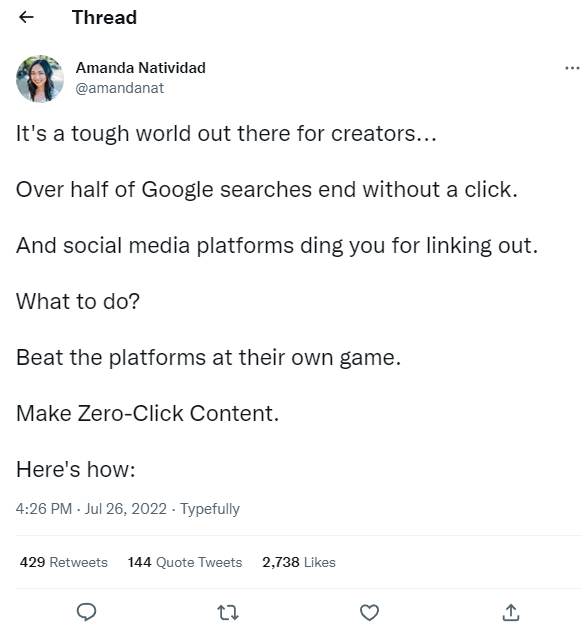
As SparkToro’s VP of Marketing, Amanda Nativdad knows a thing or two about creating engaging content for brands.
Amanda turned this blog post she wrote for SparkToro into an in-depth Twitter thread, sparking engagement on the platform and directing lots of people to read the blog for more information.
This isn’t Amanda’s first foray into transforming pieces into Twitter threads; she commonly repurposes content into Twitter threads, as seen in this podcast alteration example.
3) Writing a blog post for podcast episodes
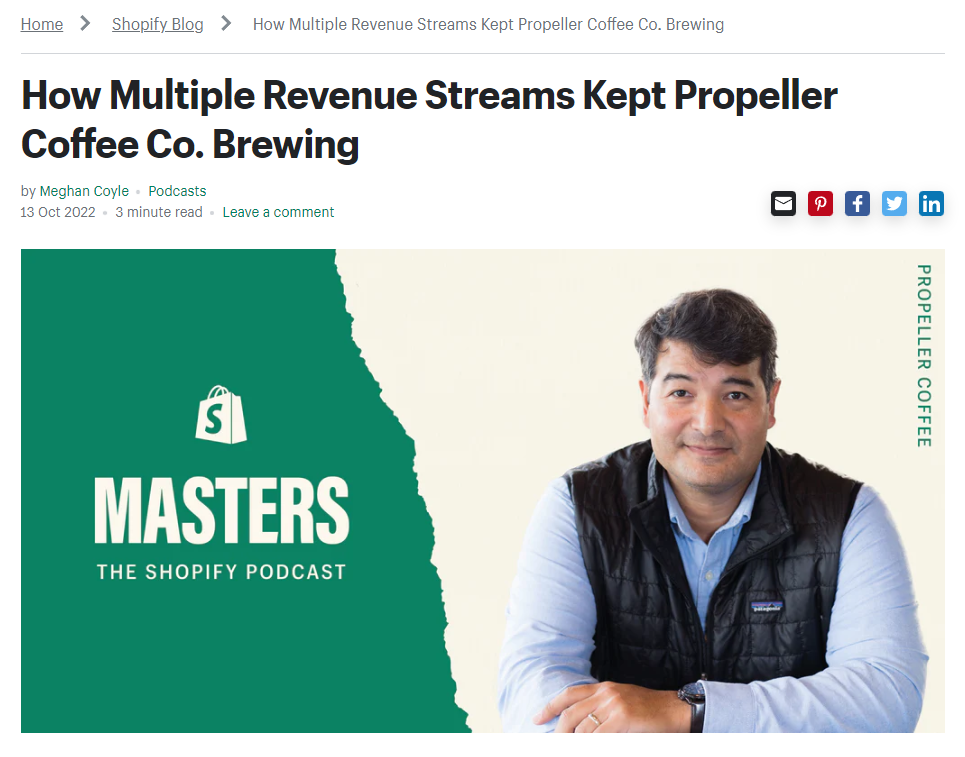
Shopify is a purpose-built eCommerce platform, and the team responsible for its content marketing has its content repurposing strategy nailed.
Along with a well-maintained blog, the platform also hosts the Shopify Masters podcast, which is designed for Shopify store owners. The Shopify content team ensures synergy between their blog and podcast by transforming podcast episodes into blog posts.
In this blog post, you can see how they turned their podcast episode with the founder of Propeller Coffee Co. into a value-packed blog. They took quotes from the episode and embedded a streaming bar for anyone who preferred to listen to the podcast rather than read the transcript.
4) Transforming blogs into a webinar
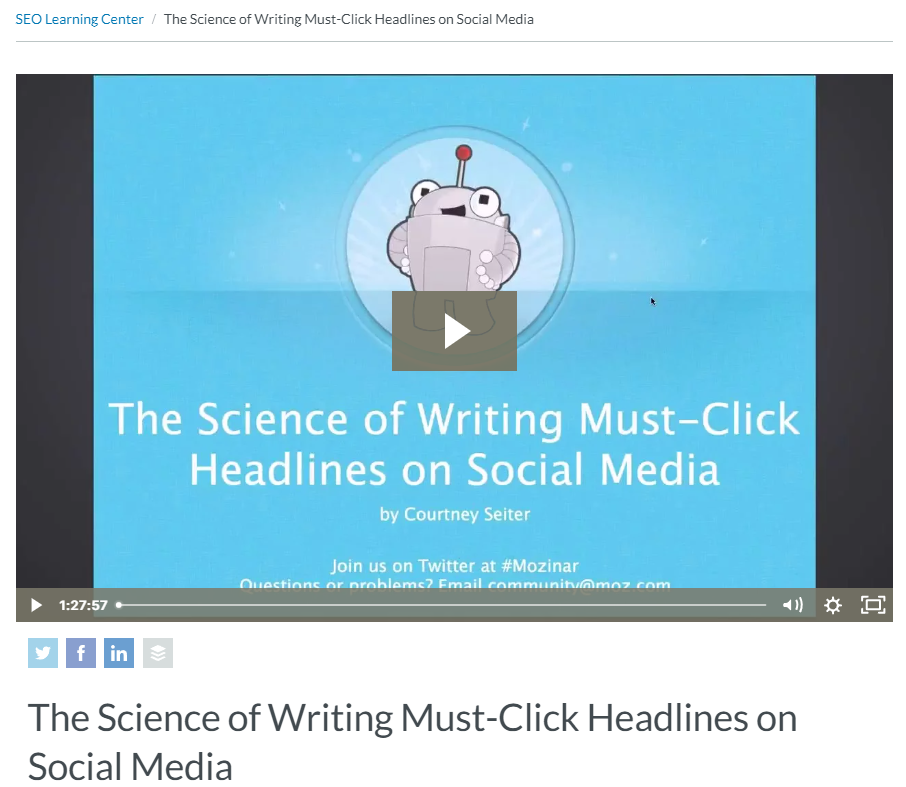
Social media scheduling app Buffer partnered with the SEO tool Moz to create a webinar called “The Science of Writing Must-Click Headlines on Social Media.” This webinar is available for members of Moz’s free community — making it an exemplar form of exclusive content to encourage community subscriptions.
To create the webinar content, Buffer used past blog posts they’d written on the topic of headlines. Then, they converted these blog posts into an engaging, presentable webinar format and added any new supporting information.
5) Turning TikTok videos into email newsletters

TikTok creator Miss Excel spotted an opportunity to nurture her audience through email newsletters. However, rather than devoting significant time to crafting weekly newsletters from scratch, she cleverly repurposes her popular TikTok videos into email content.
Kat, the creator behind Miss Excel, turned this popular TikTok about merging cells into one of the main topics of her newsletter. Kat frequently uses this repurposing tactic — with great success (she currently has almost 900K followers on TikTok).
Content repurposing tools
Finally, if you don’t have the time, team, or mental bandwidth to repurpose your content consistently, here are some tools that can help.
Automata
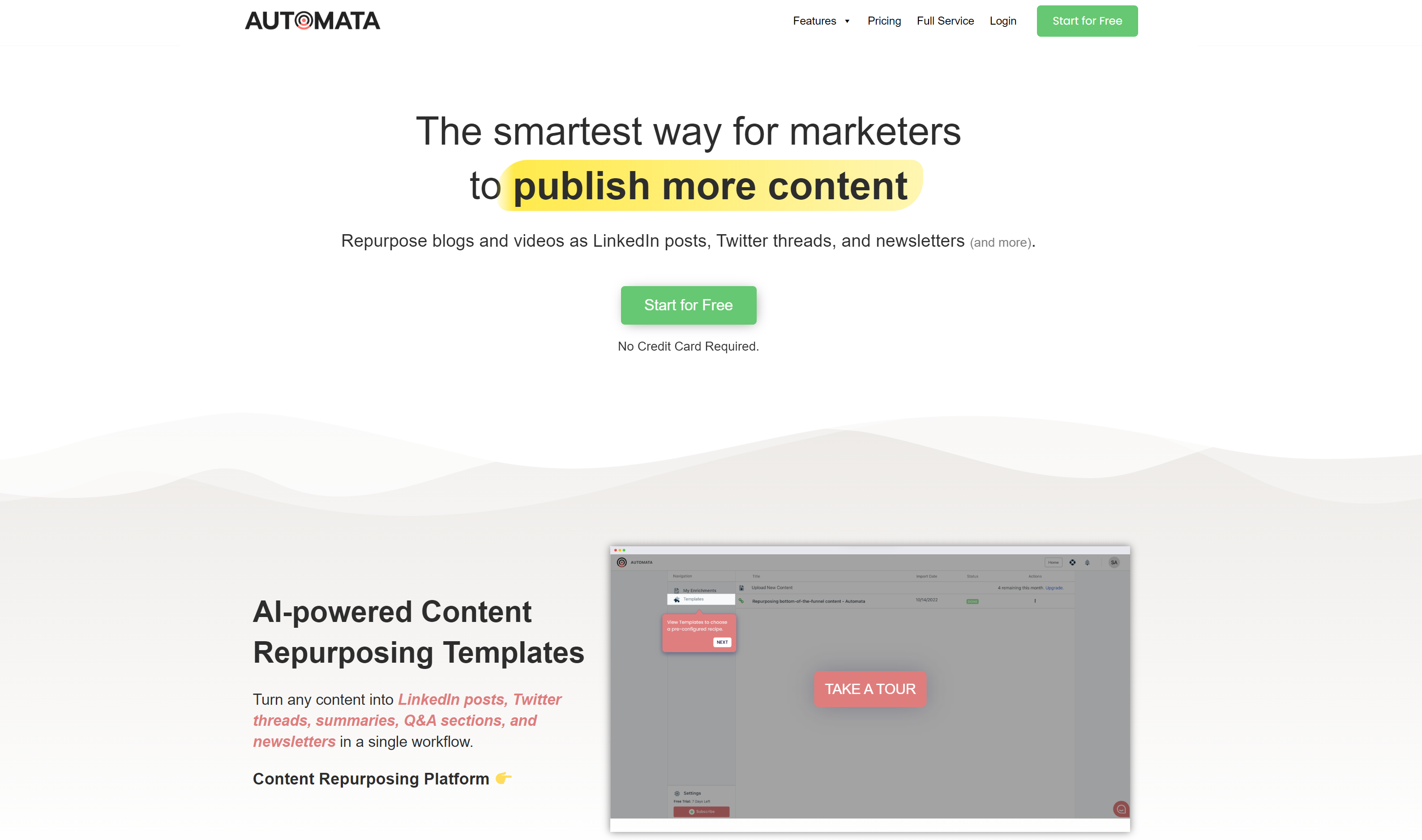
Automata provides AI-powered content templates that you can insert your original copy into. Use their platform to turn blogs, press releases, PDFs, and more into LinkedIn posts, Twitter threads, Q&As, emails, and summaries in a single workflow. They also have a Chrome extension to speed up your posting.
Lately
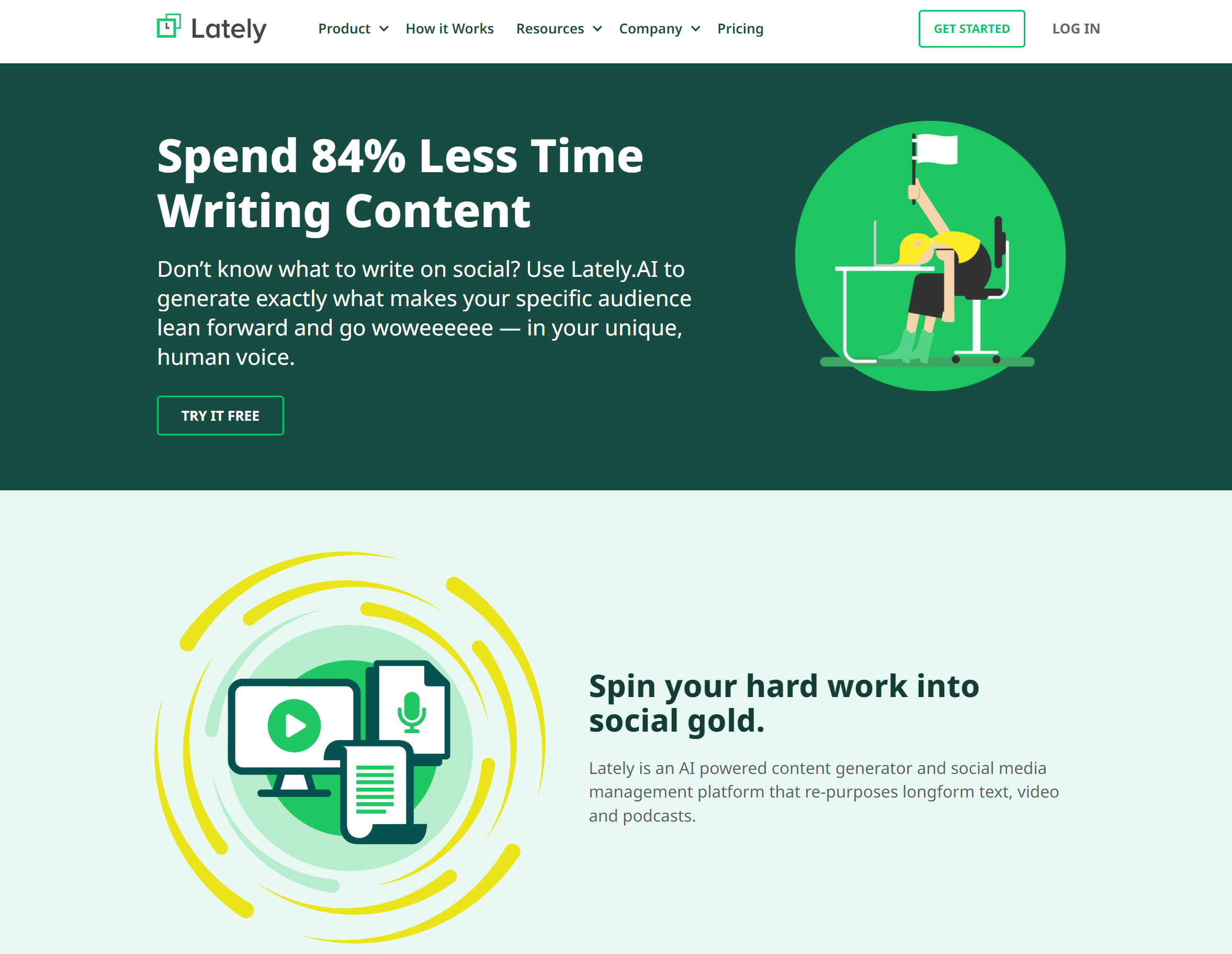
Lately is an AI-powered tool that turns long-form text, video, and audio files into social media posts. It will learn your brand voice and tone from your original copy, then slice it up into dozens of social media posts you can then schedule out. Their tool also uses your own profile history and data from their archives to determine what messaging and key points to focus on from your original content.
Designrr
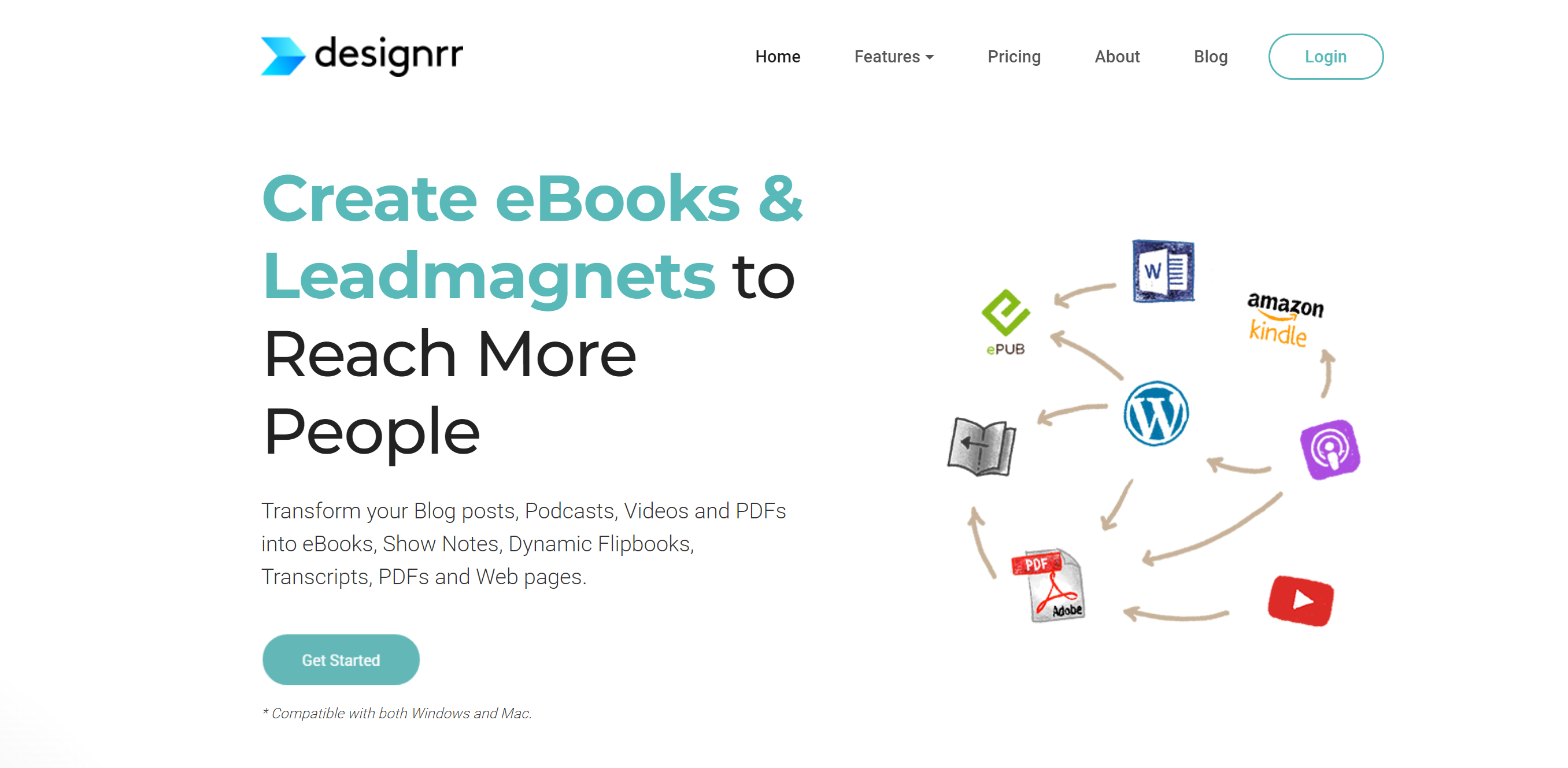
Designrr is specially built to create ebooks and lead magnets from your blogs, PDFs, videos, and audio clips. Upload your content, adjust it in their native editor, add copyright free images and adjust the fonts and layouts, then download your new ebook or whitepaper.
Animoto
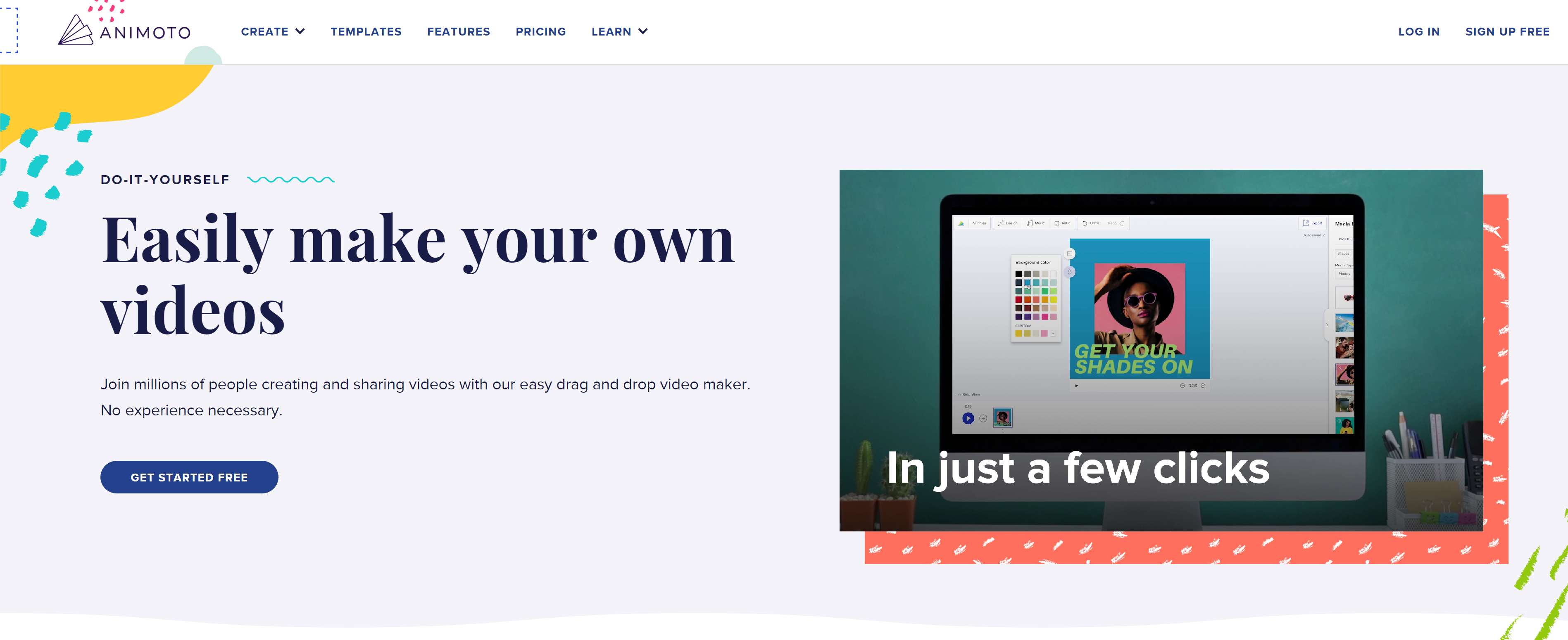
Animoto is great for turning your written content into videos. Upload your own images or choose from their library, then overlay the key points of your written content or statistics into an engaging video. You can use their templates, and save your brand fonts, colors, and logo.
Wrapping up — Breathe new life into old content with content repurposing
As I’ve stressed in this article, repurposing can’t be an afterthought. For the best results, it needs to be one of the headliners of your content strategy.
Repurposing content leverages your existing content bank and strengthens its performance. Actively repurpose content during the content creation stage to gain more mileage out of your work. At the same time, prioritize the most valuable content pieces — the ones most likely to perform well or have a long life cycle.
Want more tips for improving your content workflow? Check out my roundup of 200+ content creation tools you can use to achieve greater results from your content production.